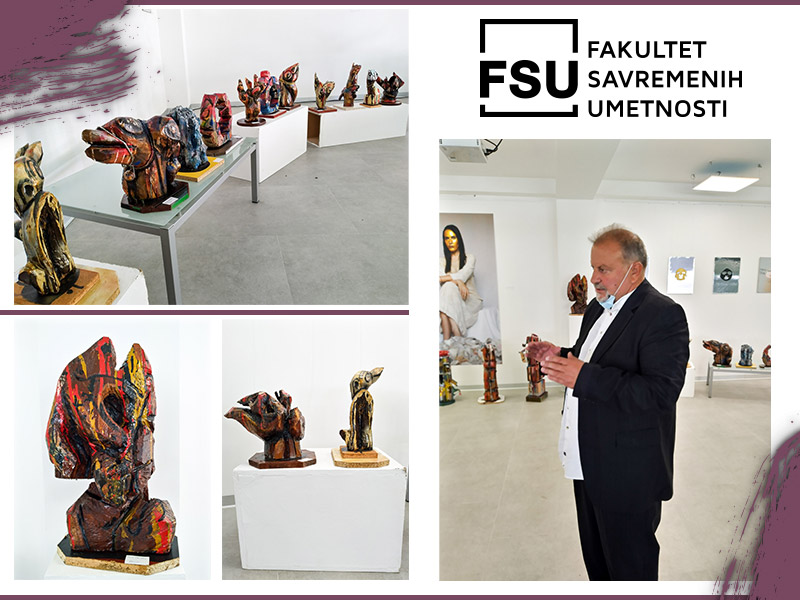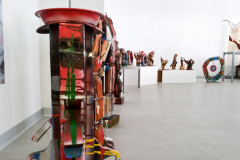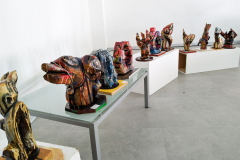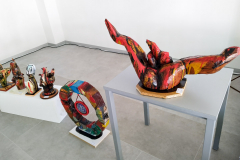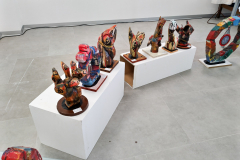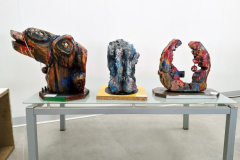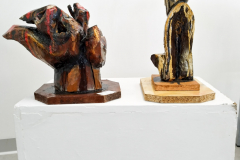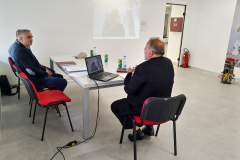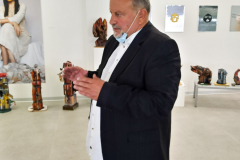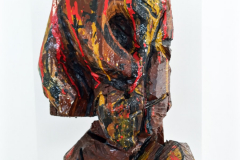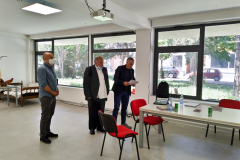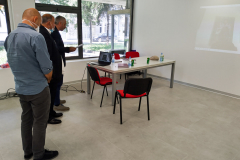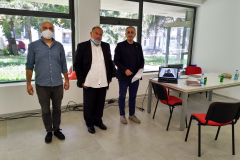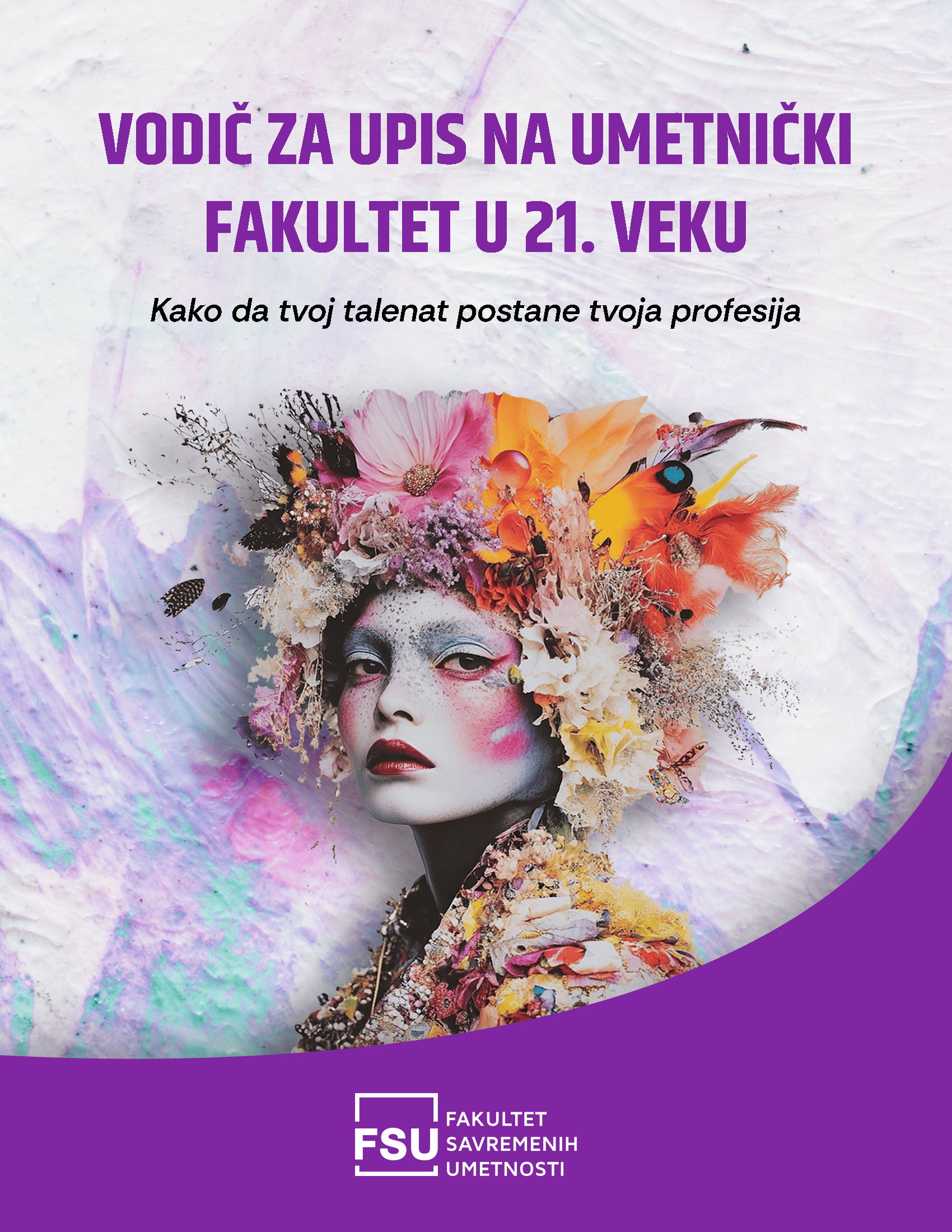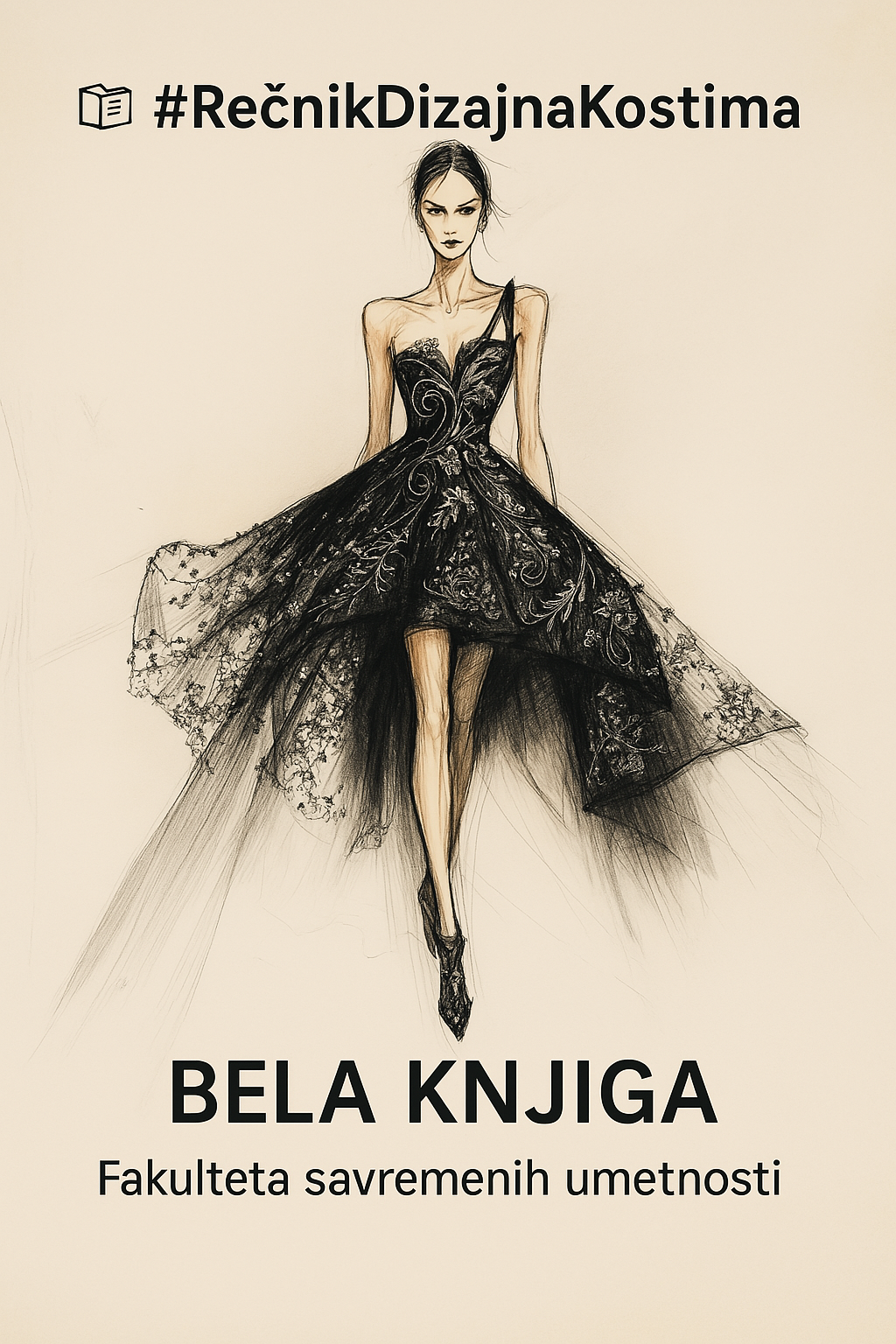The Gallery of the Faculty of Contemporary Arts is bustling with activity these days. FCA has produced another Doctor of Arts – Haxhi Kastrati successfully defended his doctoral art project. His project is called The Transformation of a Form Uncovered and his mentor was the Professor of the Faculty of Contemporary Arts – Branislav Sekulić.
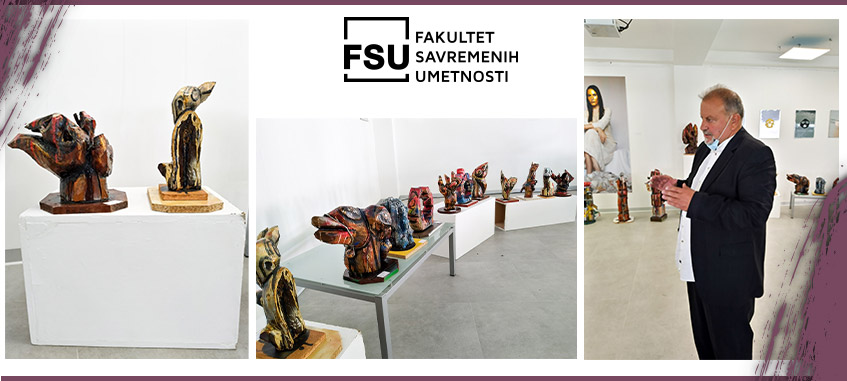
As part of his doctoral art project titled The Transformation of a Form Uncovered, Kastrati created around 50 painted sculptures, mostly in wood (36 of which are mentioned in the written section of the project). In addition to wood, some works make use of stone and different everyday objects. The measurements of these sculptures range from 30 x 10 x 15 cm to 105 x 35 x 25 cm. These playful forms could be classified among abstract-associative and figurative art by its nature and a pronounced expressive component.
Haxhi Kastrati’s six years of work on his doctoral art project
In his persistent and diverse efforts as a sculptor-painter over the period of six years, and with a continuous and tenacious nurturing and improvement of his expressive potentials, Kastrati created works of a strong gesture, fauvist palette and complex transformation from a natural into an abstract and associative expression with expressive and rhythmic forms.
There are three visible levels of artistic processing in his artistic strategy: form processing, object application and paint layer. Form processing involves the establishment of a composition which usually begins from the central mass. Having chosen a free-hand, individual stroke that doesn’t solely outline or imitate, the only thing Kastrati takes from the real world is the shape, the rest is personal choice and interpretation. He is well-versed in the composition, the plans are competently defined, and the central mass is the pivot around which the form develops and which it follows in all directions. Applying objects on a previously prepared wooden surface by nailing or gluing them, he creates a desired motif, or enhances the effect of the created form. The paint layer comes at the end. Form is its starting point, and it is integrated into the structure of processed wooden surfaces, using them as the foundation for generating images of strong colors, sturdy composition and accentuated drawing. Kastrati uses enamel paints of good viscosity for the paint layer, applying them quickly, by dripping or spraying. The paint layer is more of a visual sensation enriched with the artist’s inner vision and expression rather than a representation of any particular object or concept.
Numerous accolades for the FCA doctoral student
Doctor of Arts, Haxhi Kastrati was born in Peć in 1955. He completed his bachelor’s degree at the Academy of Arts in Priština, Sculpture Department, and his master’s degree at the Faculty of Fine Arts in Belgrade. During 1985/86, he resided in France, as the recipient of the scholarship for École supérieure d’art in Marseille from the French Government. He is the president of the Association of Fine and Applied Artists of the Peć region and recipient of numerous awards for painting.

